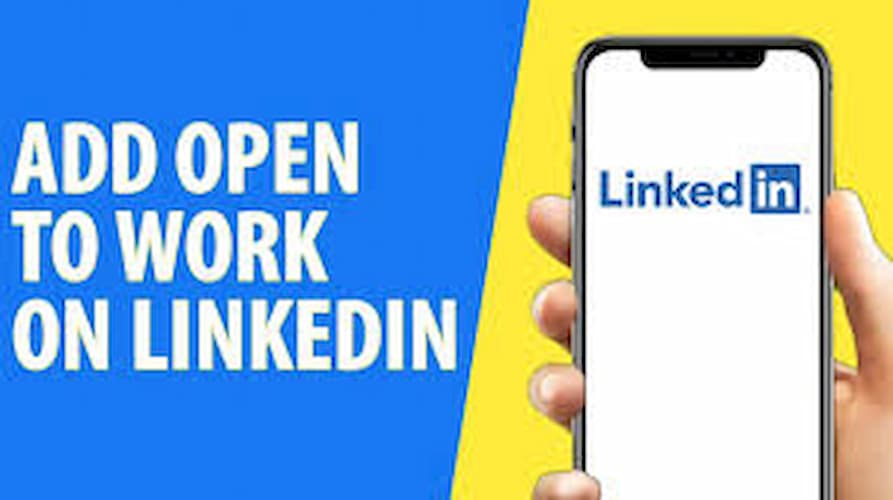In today’s competitive job market, it’s essential to take advantage of every opportunity to stand out to potential employers. LinkedIn, being one of the most popular professional networking platforms, offers a feature called ‘Open to Work’ that lets recruiters know you are actively seeking new job opportunities. This guide will walk you through the steps to set it up and optimize your LinkedIn profile for job searching.
Setting Up ‘Open to Work’
- Log In to LinkedIn: Start by logging into your LinkedIn account. If you don’t have an account, you can easily sign up on the LinkedIn website or app.
- Go to Your Profile: Click on your profile picture or name in the top bar to access your profile page.
- Edit Profile Section: Scroll down to the profile section labeled “Open to Work.” If you don’t see it, click on the “Add profile section” button, and select “Intro” from the dropdown menu.
- Add ‘Open to Work’: Click on the “Open to Work” button, and a new window will pop up with options to customize your job search preferences.
Customizing Your Job Preferences

- Job Titles: Enter the job titles you are interested in. Be specific and include relevant job titles that match your skills and experience.
- Job Locations: Specify the locations where you are willing to work. You can choose specific cities, states, or even countries if you are open to relocating.
- Start Date: Indicate when you are available to start a new job. Options include “Immediately,” “Within the next month,” and other time frames.
- Job Types: Select the types of jobs you are looking for, such as full-time, part-time, contract, temporary, or remote.
- Visibility Settings: Choose who can see that you are open to work. You can select “All LinkedIn members,” which includes recruiters, or “Only recruiters.”
- Add a Note to Recruiters: You can add a brief note to recruiters explaining why you are looking for a new job and what makes you a great candidate. Keep it concise and highlight your key strengths.
Optimizing Your LinkedIn Profile
- Professional Photo: Ensure that your LinkedIn profile has a high-quality, professional photo. This creates a positive first impression.
- Compelling Headline: Write a compelling headline that captures your expertise and what you are looking for. It should be more than just your job title.
- Complete Summary: Add a well-crafted summary that highlights your skills, experience, and career goals. Use keywords that recruiters are likely to search for.
- Experience Section: Update the experience section with your latest roles and achievements. Include detailed descriptions and quantify your accomplishments whenever possible.
- Skills and Endorsements: List relevant skills and get endorsements from colleagues and connections. This adds credibility to your profile.
- Recommendations: Request recommendations from former colleagues, managers, or clients. A few strong recommendations can significantly boost your profile.
Leveraging LinkedIn Features
- Join LinkedIn Groups: Participate in LinkedIn groups related to your industry or interests. Engaging in discussions can help you network with professionals and increase your visibility.
- Follow Companies: Follow companies you are interested in working for. This allows you to stay updated on their job postings and news.
- Engage with Content: Regularly engage with content by liking, commenting, and sharing posts. This activity helps keep your profile active and visible.
- LinkedIn Learning: Take advantage of LinkedIn Learning to acquire new skills and certifications. Adding these to your profile can make you a more attractive candidate.
Conclusion
By setting up the ‘Open to Work’ feature on LinkedIn and optimizing your profile, you can effectively signal to recruiters that you are actively seeking new job opportunities. This, combined with engaging in LinkedIn’s various features, can enhance your chances of landing your dream job. Follow the steps outlined above, and make the most out of LinkedIn to advance your career.